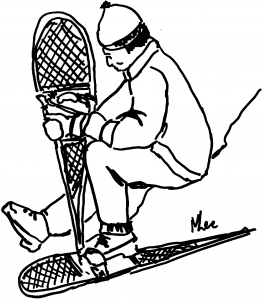Picking Icicles
Oh boy it was cold the week of my fifth birthday in late January and I could see thousands of new long skinny glass like icicles hanging from the roof of our home on Limekiln Lake. Propping my elbows on the windowsill in my bedroom I tried to press my cheek to the glass to really count all the slender icicles.
The glass was so cold that my cheek burned and I knew I had to go outside and free some of these from their perch. I dragged all my winter cloths down the hallway and made a sort of pile on the entryway rug. My mother asked what I was up to and I said I was going out to pick icicles. It took me a while to get all my cloths on and I needed some help with my snow suit zipper which had somehow eaten up some of the fabric and gotten stuck.
With all my warm cloths on it was hard enough to even reach around and zip and when frustration almost turned to tears my mother stepped in and gave everything a good yank, freeing the zipper. She reached out and pulled my hat down covering my ears and asked that I be careful. Well what sort of trouble could I get into? I thought to myself.
Outside the air was still and so cold it tickled my throat. Stepping down the porch steps I waded through the deep snow around the back of the house. Here in a giant heap running the full length of the house was a pile of snow that my father had shoveled from the roof. It took me several tries to climb up the ridge of the snow pile but when on top I carefully heal toed my way along.
Directly above me was the perfect neat line of icicles. When I reached up I could still not touch them even as high as I was on the snow pile. Then without warning my feet slipped and down I rushed. When I came to a halt I was pinned between the snow pile and the house. One foot seemed like it would not even try to free itself as the toe of my boot was pinned under part of the wavy board siding. When I squirmed a bit and pulled up came my foot with a wool sock on but no boot.
It took about what I deemed half a day to find the boot get the snow out brush off my socks and get the boot back on all while still pinned up against the house. Climbing up out of my wedged situation I could still feel some hot like cold spots in my one boot. Back on top of the pile I decided that most of these icicles were going to have to stay but I was determined to free at least two or three.
With every bit of my energy I made a jump in the air and swatted two with my mitten and one bonked me on the head pretty hard. I retrieved one that had stuck like a spear in the snow upright and made my way back inside the house. Being an Adirondack Icicle farmer was tough growing up.

